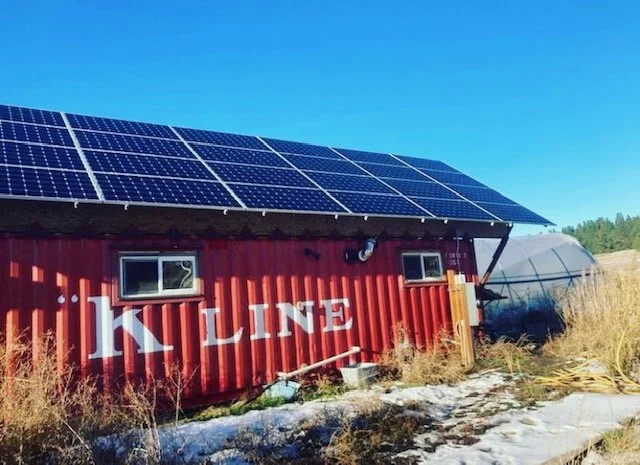How We Farm
Learn more about our efforts to grow
healthy produce, lands, people, & soils.
If you have questions, give us a call at 406-214-6664
Why We Aren’t Certified Organic Anymore:
When we began farming in Stevensville in 2016, it was important to us to distinguish our work from other producers and verify that our practices for customers who were learning about us for the first time. That’s why we chose to begin the process of certifying the land as organic.
Before crops can be certified organic, farmers must carefully manage their land without using prohibited inputs like synthetic pesticides for 36 months. And in 2019, our organic inspector at the time certified the land and we received a testament to our work in the form of a certificate. It took three years of hard organic management work transitioning the land after beginning our lease in order to tell customers that our farm was organic, but we did it!
The following year, however, we made a difficult decision.
In 2020, we dropped our organic certification. The reason: our inspector tasked with enforcing the National Organic Program standards, could not certify the practice of spreading metric tons of tree leaves because we sourced them from the City of Hamilton’s leaf donation program. We’ve never had a problem with these leaves. They have only contributed to the quality of these silty loam soils. This free resource has helped us improve the organic matter percentage in soils from ~2.1% to 2.8 and even 2.9% in a matter of only five years! We are very proud of this soil improvement.
Organic matter, AKA the amount of soil carbon, is the lifeblood of an organic farming system. By feeding the soil leaves, cover crop residues, compost, and food scraps, a farmer feeds the soil biology. Why is soil biology important? Because it’s this biology (the dynamic ecosystem of everything from worms to bacteria) that’s responsible for digesting the nutrients roots can’t pull up. This digestion process (also called nutrient cycling) converts the soil’s natural reservoir of nutrients into nutrient forms that are available to plants. Basically, if a farmer provides carbon (and other nutrients that may be lacking in the soil’s chemistry), they can feed this soil foodweb, and as a bi-product, plants can rely on what’s in the soil so that the farm doesn’t constantly purchase off-farm, energy-intensive inputs from across the Earth.
But there’s another tangible benefit to using the leaves at our farm. Before working with our farm, the City of Hamilton would drive load after load to Missoula (a tremendous use of petroleum). Our former organic inspector wrote of our work: “Your desire to recycle and build soil organic matter and save petrol in transporting yard waste to Missoula is commendable and reflects your commitment to sustainable farming.”
Compared to many hydroponic (soil-less) growers and farmers who don’t produce renewable energy on-site, we are committed to sustainable farming — we go beyond organic certification in many ways.
Explaining our work to customers is more challenging than just slapping an organic sticker onto our products. But we didn’t get into farming because it was easy. We feel comfortable explaining that our practices are in-line with certification. And that we do a whole lot more beyond the boxes that get checked off during the organic certification process. We plant pollinator strips for insects and chokecherry trees for birds; we generate solar electricity using 28 photovoltaic panels; we insulate buildings to r-values beyond what most contractors provide; we don’t use electric or natural gas to heat greenhouses, instead relying on the sunlight to warm the spaces; and we improve the nutrient density of vegetables by conducting soil tests and adding organically-approved nutrients to the soil.










